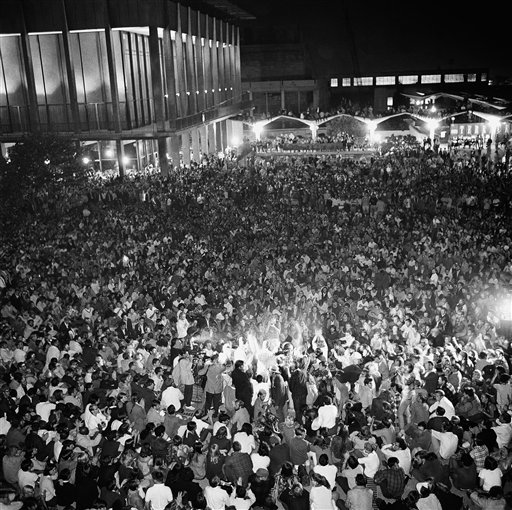In Cohen v. California, 403 U.S. 15 (1971), the Supreme Court established that the government generally cannot criminalize the display of profane words in public places.
Cohen charged with beaching peace for wearing profane jacket
The controversy in this case began in April 1968, when Paul Robert Cohen wore a jacket bearing the words “Fuck the Draft” into a Los Angeles courthouse.
He was arrested and charged with violating a state breach-of-the-peace law prohibiting disturbing of the peace by “offensive conduct.”
A Los Angeles court convicted Cohen and sentenced him to 30 days in jail. A California court of appeals affirmed his conviction, finding that it was “certainly reasonably foreseeable” that his conduct in wearing his jacket could cause a violent reaction. The Supreme Court of California declined to review the case by a 4-3 vote. Cohen appealed to the U.S. Supreme Court, which reversed his conviction in a 5-4 vote.
Justice Harlan reasons profanity on jacket was protected by First Amendment
In the opinion for the Court, Justice John Marshall Harlan II began by observing that the “case may seem at first blush too inconsequential to find its way into our books, but the issue it presents is of no small constitutional significance.”
He reasoned that Cohen’s display of profanity could not be classified as obscenity, because it was not “erotic.” He also determined that the language could not be considered fighting words — another unprotected form of expression — because it was not directed at a particular recipient.
“No individual actually or likely to be present could reasonably have regarded the words on appellant’s jacket as a direct personal insult,” he wrote.
Rejecting the state’s argument that the conviction was justified as a way to protect the privacy interests of unwilling viewers, including women and children, Harlan responded that they and others upset by Cohen’s jacket “could effectively avoid further bombardment of their sensibilities by averting their eyes.”
‘One man’s vulgarity is another’s lyric’
Harlan also rejected the idea that the state could prohibit the display of Cohen’s jacket as the guardian of public morality.
In oft-cited language, he noted, “[O]ne man’s vulgarity is another’s lyric” and “because government officials cannot make principled distinctions in this area that the Constitution leaves matters of taste and style so largely to the individual.”
He also warned that the “government might soon seize upon the censorship of particular words as a convenient guise for banning the expression of unpopular views.”
Writing for the four dissenters, Justice Harry A. Blackmun called “Cohen’s absurd and immature antic . . . mainly conduct and little speech.” He reasoned that the language on the jacket fell within the fighting words exception.
David L. Hudson, Jr. is a law professor at Belmont who publishes widely on First Amendment topics. He is the author of a 12-lecture audio course on the First Amendment entitled Freedom of Speech: Understanding the First Amendment (Now You Know Media, 2018). He also is the author of many First Amendment books, including The First Amendment: Freedom of Speech (Thomson Reuters, 2012) and Freedom of Speech: Documents Decoded (ABC-CLIO, 2017). This article was originally published in 2009.

